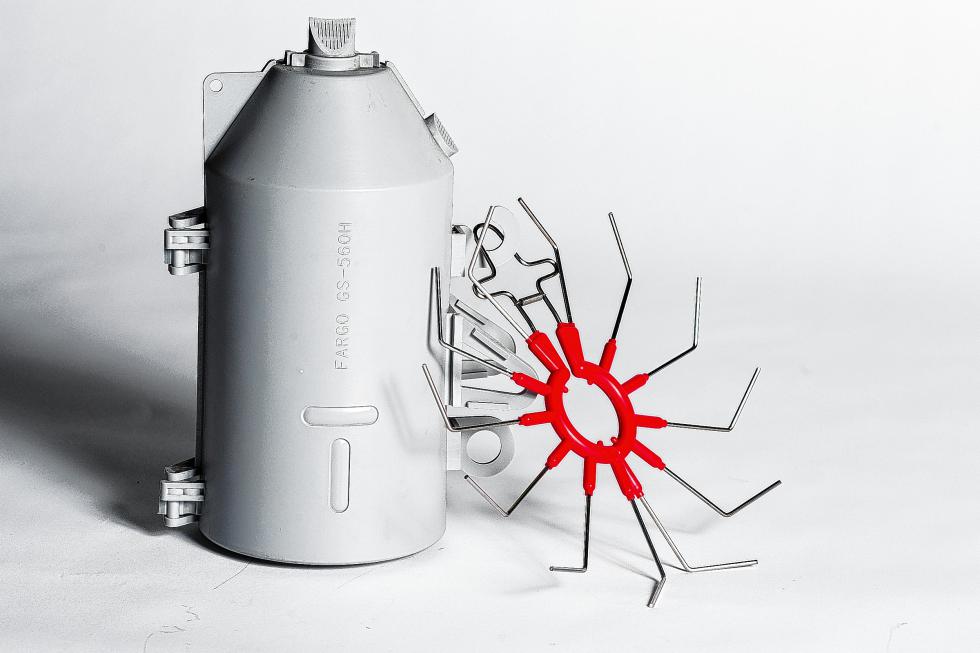For people in the electricity business, there was only one thing surprising about Saturday’s power outage in Concord, in which an errant hawk left 13,000 customers in the dark: The culprit had feathers rather than fur.
“About 15 percent of outages can be attributed to animal contact, but the vast majority are caused by squirrels,” said Alec O’Meara, spokesman for Unitil in New Hampshire
The public might not think about it much, but squirrels and other four-legged critters are a real headache for utility companies because they use power lines as a sort of above-ground highway network. In New Hampshire, birds are less of an issue.
“It’s basically a constant battle,” said Seth Wheeler, spokesman for New Hampshire Electric Cooperative. NHEC, whose service area is quite rural and thus susceptible to wildlife issues, reported 56 outages caused by animals in November, which is a typical number for a month.
Squirrels become a problem when they make contact with two locations at once in separate parts of the network.
Touching the same power line twice, as when birds perch on a bare wire, isn’t a problem because it doesn’t complete a new circuit or “make a path to ground,” as electricians describe it, but touching two parts of the network that aren’t supposed to connect can create a short circuit, since living bodies conduct electricity.
That is fatal for the animal and bad for the rest of us because the resulting short circuit usually blows a fuse.
At Eversource, between 5 and 10 percent of all annual “incidents resulting in power outages” are caused by animals, said spokesman Martin Murray. However, he added, the incidents result in fewer than 5 percent of total customer outages because they “typically impact fewer total customers, compared to tree-related incidents.”
“The classic squirrel outage involves a transformer,” said O’Meara, referring to the trash can-sized devices at the top of many utility poles, which step down voltage levels so it can be handled in the home.
“There’s a wire that comes out of the top of the transformer can. If (a squirrel) puts its feet on top of transformer can, reaches up and manages to grab the direct line above the transformer can, it causes a current that runs into the can, which causes a short, which causes an outage,” he said.
A host of companies make squirrel guards for transformers and other parts of the electrical system to combat this very problem. Unitil uses a design that sits on top of the transformer and looks a little like a traffic cone, putting a non-conducting material in the way of the squirrel.
Not all transformers have guards and even so, animals continue to cause shortages, just as squirrels continue to get into bird feeders despite the many protective devices people install.
If the short-circuit happens on a distribution line, like those that run down residential streets, it can affect a few buildings. When the short is on a major line it can affect more – sometimes a lot more.
Saturday’s incident blew out a fuse on a sub-transmission line, carrying at least 35,000 volts. As O’Meara described it to reporters over the weekend, if you consider the electric grid as being a tree, with electric lines starting at power plants and spreading out as they travel, the shortage was close to the trunk, so it affected a lot of limbs and branches.
Birds cause far fewer outages, and usually not by landing on a wire but by flying between wires and making accidental contact with two at once.
This is why large birds, including raptors like hawks, are more of a problem than small birds.
O’Meara said Unitil was still determining what exactly happened Saturday to the hawk – whose species has not been determined, perhaps because of the damage done by the electricity. It may have been standing on a line and touched a wing to a “tap” on a pole, where the line connects.
The post-outage analysis will help Unitil decide on how to react, O’Meara said – perhaps by increasing the spacing between components at the location.
One thing that won’t happen is to put insulation in all power lines, because of the enormous expense. Insulation is added at the most vulnerable locations.
“It is now written into our construction codes, to install animal guards on any new transformers and make primary wires insulated,” said Wheeler.
There are many ways that animals can cause short-circuits. Some build nests around transformers, perhaps attracted by the heat; in fact, a species known as the monk parrot builds such gigantic communal nests on utility poles that it has caused some to collapse.
Then there is bird poop, which is so watery that it conducts electricity.
If too much bird poop builds up around connections, it can cause a short circuit. But there’s a stranger problem.
Birds excrete feces and urine at the same time, which is why their poop is so watery, and in some species it can form long strings if the bird excretes while flying. When such a string comes in contact with electric equipment, it can, in the words of a report from the trade journal Transmission & Distribution World, “cause insulator flashovers due to long streams of stringy, conductive and semi-liquid excrement.”
Happily, this doesn’t appear to be a common problem hereabouts.
“I personally have never seen a bird-poop cause listed in an outage report,” said O’Meara. “I’ll let you know if I do.”
(David Brooks can be reached at 369-3313, dbrooks@cmonitor.com, or on Twitter @GraniteGeek.)


 Return to the Concord Monitor
Return to the Concord Monitor